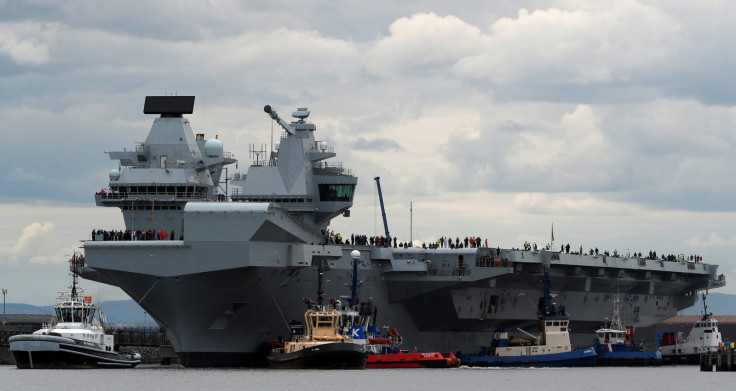Leak causes 200 litres of seawater per hour to pour into Royal Navy's new £3.1bn aircraft carrier
It is the latest setback for Britain's Navy.
The Royal Navy's new multi-billion pound aircraft carrier has a leak so big that hundreds of litres of seawater pour into it each hour which could cost millions to fix.
HMS Queen Elizabeth reportedly has a major defect with the stern seal which surrounds its huge propeller shafts.
The seal keeps the water out but sea trials have shown that it leaks 200 litres of water per hour, a defect which might force it to go from its dock in Portsmouth Harbour, to a dry dock, the Sun reported.
At a price tag of £3.1bn, this could mean millions more pounds being spent on Britain's largest ever war ship before its maiden voyage.
Although the manufacturer, Aircraft Carrier Alliance (ACA), will foot the initial bill, future repairs may have to paid for by the taxpayer.
A Navy insider told the Sun: "We're about to uncover the true cost of carrier operations. There is a feeling that the ACA mugged us off by not sorting this before the handover."
It is the latest setback for the Navy had to deal with technical problems with its fleet of Type 45 Destroyers which break down in hot weather. Also, proposed spending cuts by the Government could see fewer Royal Marines, and amphibious assault ships.

The Royal Navy confirmed that an issue with a shaft seal was discovered and that "this is scheduled for repair while she is alongside at Portsmouth.
"It does not prevent her from sailing again and her sea trials programme will not be affected," a spokesman said.
Meanwhile a spokesman for ACA said: "HMS Queen Elizabeth has been accepted into Her Majesty's fleet. It is normal practice for a volume of work and defect resolution to continue following vessel acceptance.
"This will be completed prior to the nation's flagship re-commencing her programme at sea in 2018."
The vessel is 932-feet long and weighs 65,000 tonnes. It was commissioned into the fleet by the Queen earlier in December.
Earlier this year, retired RAF leaders have warned that the ship may be useless in any future conflict unless more more patrol planes protect it, following the axing of the UK's Nimrod patrol plane programme.






















